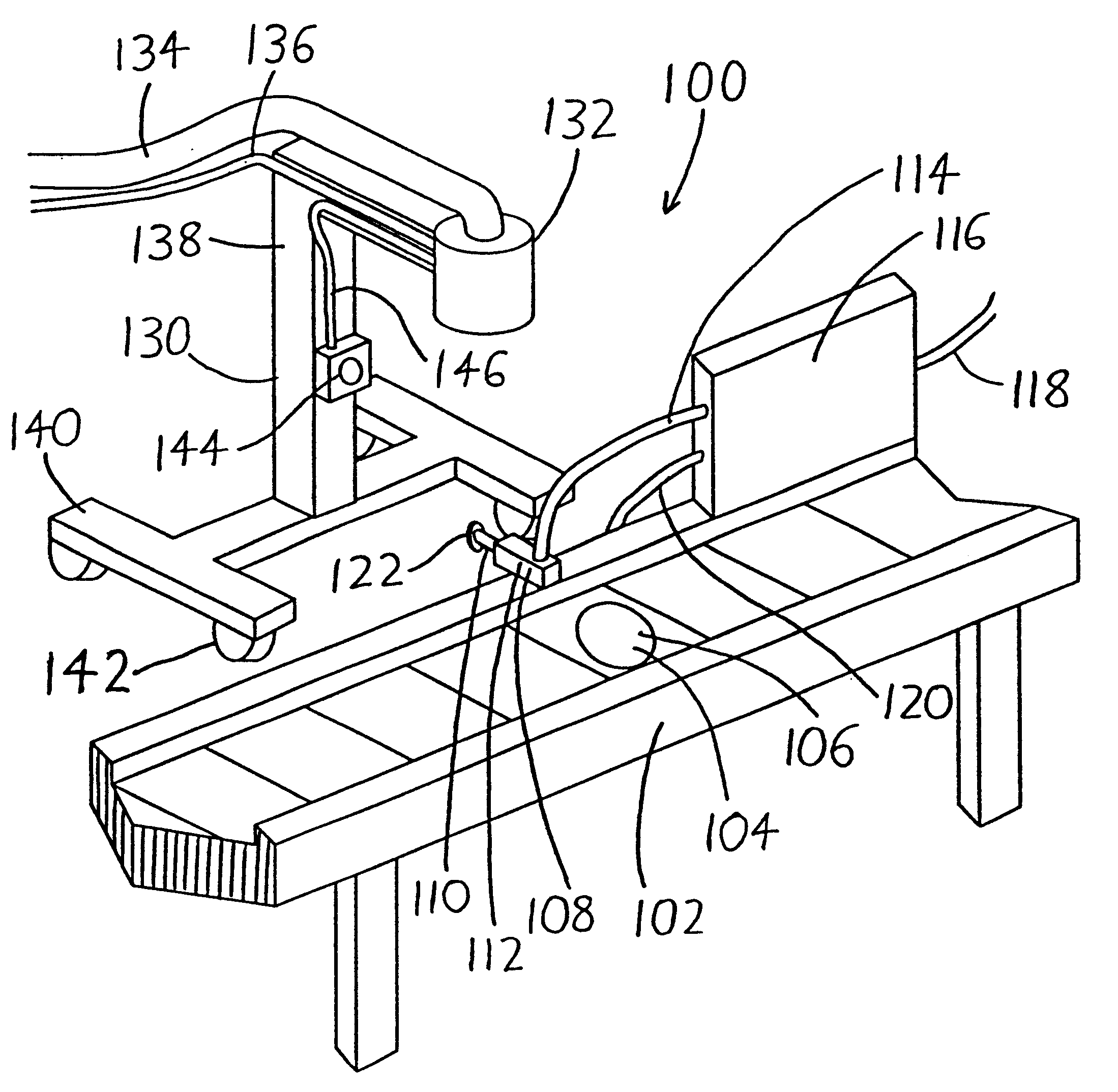Mobile fluid product filling system with fast setup
a technology of fluid product and filling system, which is applied in liquid handling, packaging goods, transportation and packaging, etc., can solve the problems of limited filling accuracy, unsuitability of volumetric filling, and limited filling speed, so as to reduce maintenance and increase safety, the effect of fast shut-down and start-up tim
- Summary
- Abstract
- Description
- Claims
- Application Information
AI Technical Summary
Benefits of technology
Problems solved by technology
Method used
Image
Examples
Embodiment Construction
An exemplary preferred version of the invention is illustrated in FIG. 1, wherein a filling system 100 is shown with a filling station 102 (the filling station 102 in this case being provided by a conveyor) and a filling unit 130. The filling station 102 has a filling position 104 at which a container traveling on the conveyor is to be filled with fluid product. A container fill sensor 106 (e.g., a weight sensor such as a load cell or digital scale) is situated at the filling position 104 so that it may detect the degree to which a container situated at the filling position 104 is filled with fluid product. A movable switching member 108 is also provided on the filling station 102, preferably at a point adjacent to the filling position 104 and at or near one of the boundaries of the filling station 102 (in the filling system 100 of FIG. 1, at the edge of the conveyor of the filling station 102). The switching member 108 is shown with a rod 110 which is driven by a pneumatic cylinder...
PUM
| Property | Measurement | Unit |
|---|---|---|
| volume | aaaaa | aaaaa |
| filling speed | aaaaa | aaaaa |
| weight | aaaaa | aaaaa |
Abstract
Description
Claims
Application Information
 Login to View More
Login to View More - R&D
- Intellectual Property
- Life Sciences
- Materials
- Tech Scout
- Unparalleled Data Quality
- Higher Quality Content
- 60% Fewer Hallucinations
Browse by: Latest US Patents, China's latest patents, Technical Efficacy Thesaurus, Application Domain, Technology Topic, Popular Technical Reports.
© 2025 PatSnap. All rights reserved.Legal|Privacy policy|Modern Slavery Act Transparency Statement|Sitemap|About US| Contact US: help@patsnap.com


